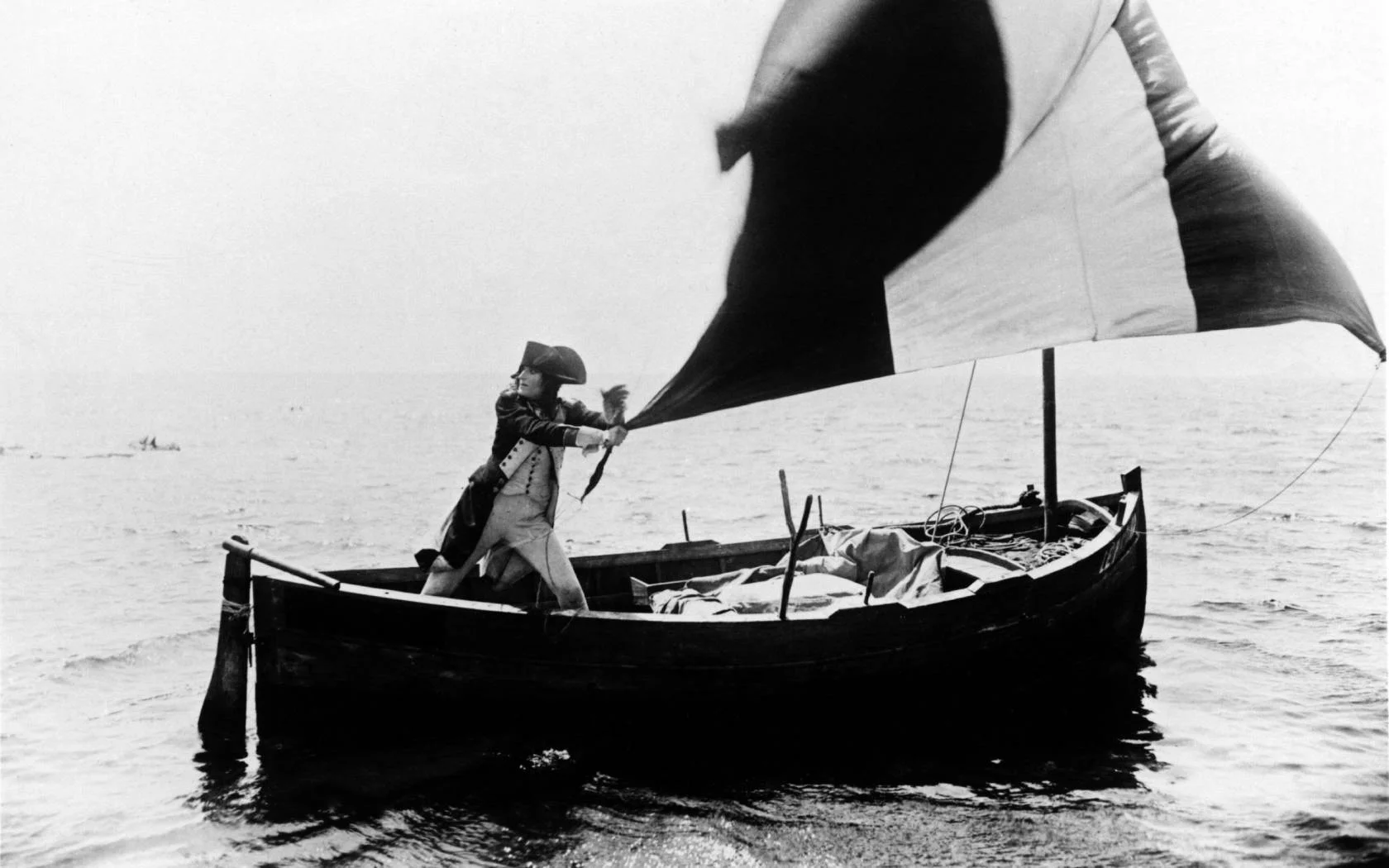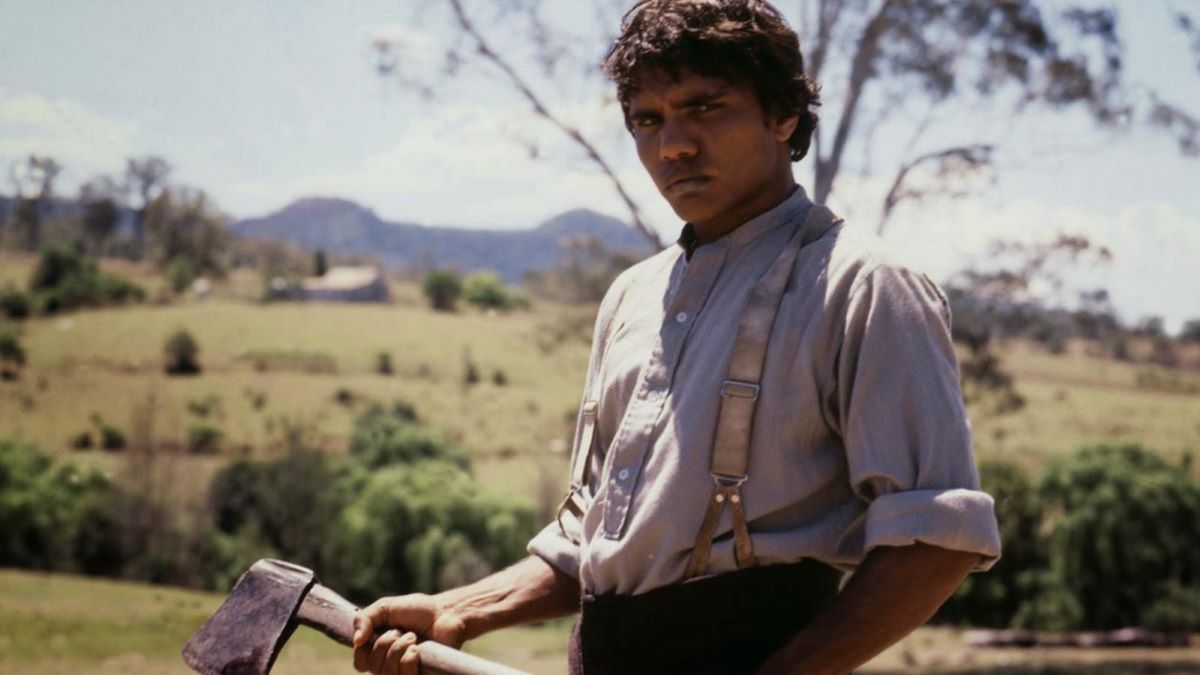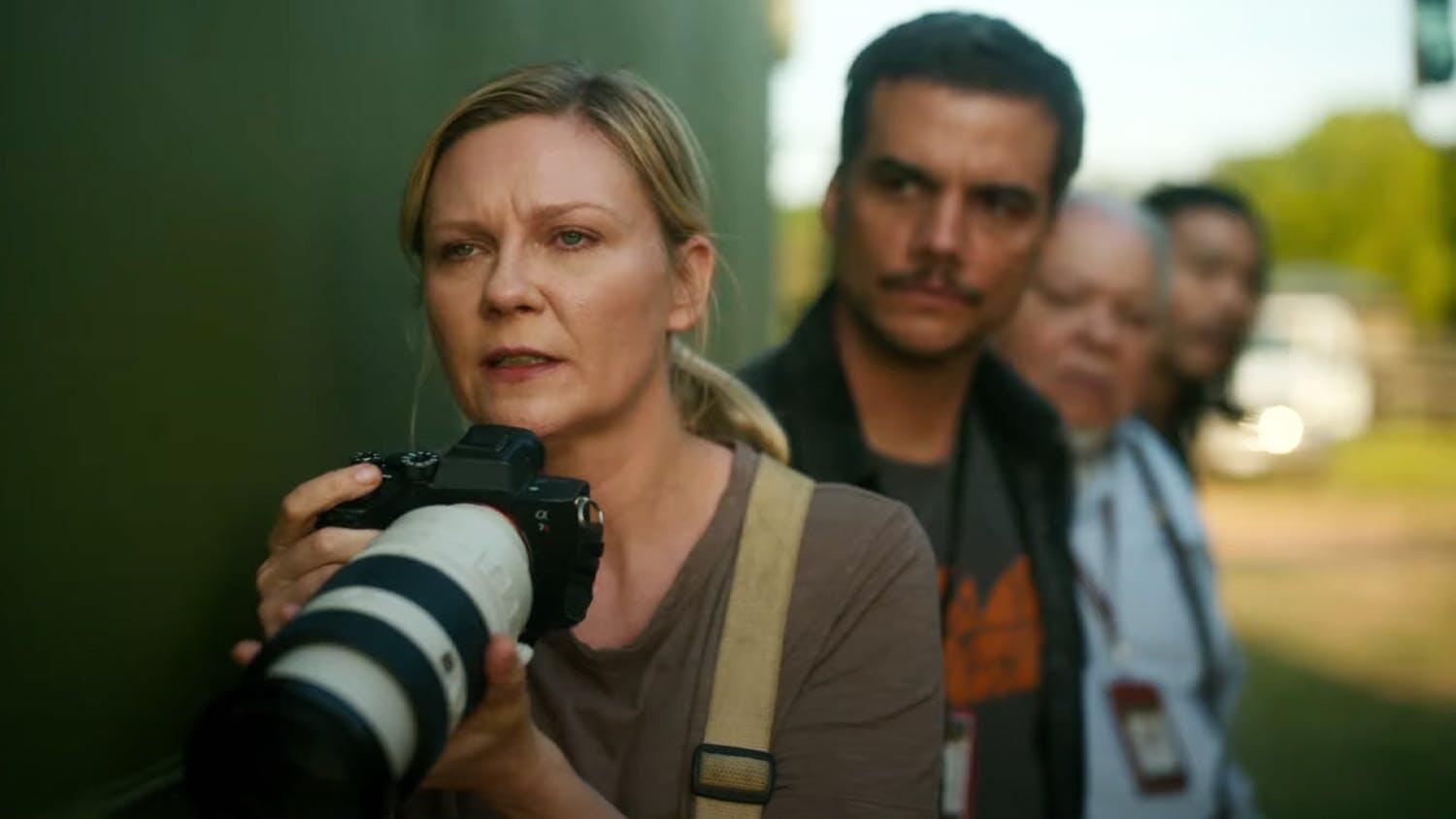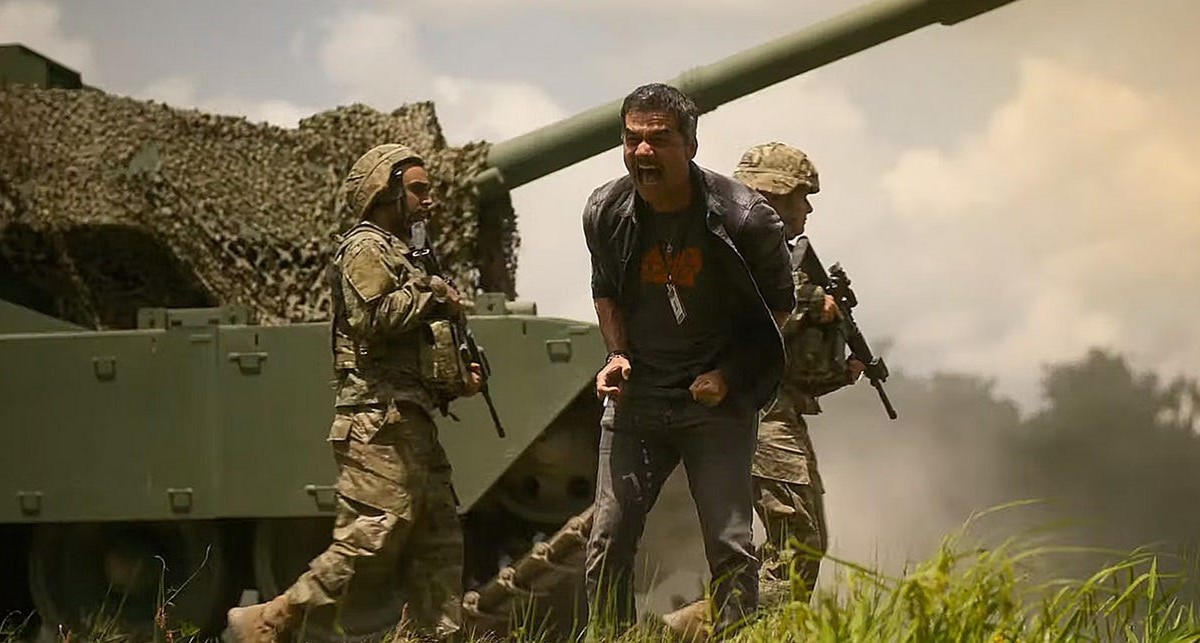by John Simon
Already on its way to becoming the most controversial movie of both 1978 (when it was shown for a week to qualify for the Oscars) and 1979 (when it is going to play the major cities across the country as a road-show attraction) is The Deer Hunter a three-hour film that Universal considered a white elephant and almost didn’t release. The movie has garnered many glowing write-ups, as well as the New York Film Critics’ prize and other awards, and will doubtless gain further official accolades; it is also incurring the wrath of journalists and other people with Vietnam experience— mostly “doves” who feel that it falsifies the Vietnam War and our involvement in it.
Why shouldn’t the director, Michael Cimino— possessor of a Yale MFA, protégé of Clint Eastwood, and writer-director of the latter’s Thunderbolt and Lightfoot by way of main previous experience —falsify the war, considering that he falsifies just about everything he touches? This is the story of three Russian-American steelworkers from Clairton. Pa., an imaginary town that is unimaginable on any level. Though quite small, it boasts a gigantic Russian Orthodox church; though conventional in every way, it permits Michael and Nick, two of the three principals, to share a mobile home rather than live with their families until they themselves take wives, as Steven, the third musketeer, appropriately does. The heroine, Linda, when her drunken father slaps her around once too often, moves into that mobile home, one or both of whose owners she is apparently in love with.
All highly unlikely in a tight, provincial ethnic milieu. Moreover, there are hardly any families in evidence, Steven has a shrewish mother who figures noticeably enough (too noticeably, in fact, considering how badly Shirley Stoler plays her); but Linda’s alcoholic father quickly vanishes, and the principals are left with no appendages other than a gaggle of giggly blondes, meant mostly to fill out the wide screen with their bodies and guffaws. Steven is about to marry an older woman who is pregnant by another man—again an unusual circumstance that the filmmakers don’t ever bother to explain. The screenplay is by Deric Washburn (a failed Harvard playwright), from a story by Cimino, Washburn, Louis Garfinkle, and Quinn K. Redeker—quite a few cooks for one broth.
The Deer Hunter begins with a farewell drinking session following our threesome’s last day at the steel mill: they have enlisted and are off to join the 101st Airborne Division. (Why so late in the game? Why weren’t they drafted?) The next major scene is Steven’s Russian Orthodox wedding; the third is an interminable wedding-cum-sendoff party at the Legion Hall. This derives clearly from the ball in Visconti‘s The Leopard, but does not justify its inordinate length by the schematic representation of our heroes and their gang as stereotypical boozers, brawlers, and pranksters, (One Green Beret who inexplicably wanders into the proceedings and answers our boys’ questions with concise obscenities is a Steal from Baby Blue Marine; he is just about the only sign of war in the film’s early sequences, even though the year must be 1972.) And despite Meryl Streep’s strong presence in the role of Linda, women hardly exist in this movie, and matter even less; the concern is with men: their friendship, ritual camaraderie, love, and perhaps something more—although Cimino has vehemently denied any homosexual implications.
Next morning, the gang goes hunting in the mountains; whereas the others exhibit varying degrees of indifference or incompetence, Michael hunts with ritual dedication and brings down an abundantly antlered stag cleanly, with a single bullet. Meanwhile, an invisible choir sings Russian hymns and the snow-capped peaks glisten in crystalline approbation. Later, the guys wax sentimental when one of them, fat Welsh, the bar owner, plays Chopin on the piano—fat chance! Thereupon, with a quick cut, we are in the Vietnam inferno.
Here everything proceeds with ruthless speed and disorienting confusion. But this is not the confusion of an individual caught up in the war; rather, it is a confusion the filmmakers wish to implant in the viewers’ minds, probably because it is also in their own. It is not dear who is killing whom and why, though it does appear that the Americans are less vicious than the Vietcong or North Vietnamese, or whoever they are. Forthwith, our three friends are reunited as captives of a bunch of monstrous yellow enemies. The next sequences are staged, acted, shot, and edited with the utmost forcefulness; the only trouble is that they make no sense whatsoever.
We are asked to believe that the VC or North Vietnamese would set up their torture camp in a fully exposed site on a river bank policed by American helicopters; that they would torture the prisoners by, among other things, forcing them to play Russian roulette while heavy bets are placed on which player will survive. We are to swallow the assumptions that the captors are stupid enough to have no guards surrounding the shack where the game is played; that they would idiotically fall for Michael’s scheme and allow a pistol to be loaded with three bullets instead of one; and that, even so, this would prove enough for the tortured and weakened Michael and Nick to kill off all their tormentors, despite the submachine guns trained on them. I am afraid that the preposterousness of all this outweighs its technical brilliance.
From here on, this supposedly realistic film goes completely berserk: not a shred of historical, logical, chronological or psychological credibility remains. I can concentrate only on the major absurdities. After they escape—mainly through Michael’s resourcefulness, courage, and strength – our buddies are separated. Nick becomes psychically unbalanced and goes AWOL. He soon turns performer in a Russian-roulette casino; we are to understand that the game has become a sport in Saigon, involving large sums for participants and bettors, and that the bodies of losers pile up outside the casinos like torn-up betting tickets at our racetracks. It is in such a casino that Michael and Nick meet up again (after what they’ve been through, they are as likely to hang out there as to let a favorite sister marry a North Vietnamese), but Nick, unaccountably, runs away from Michael.
Later, Michael goes home, reluctantly becomes Linda’s lover, and restores Steven to his unhappy wife and child. Steven, an unreconstructed double amputee, has been lingering in a VA hospital where Nick sends him lavish checks from Saigon. (How does the by-now-amnesiac Nick manage to do that? How does Steven cash these checks without anyone’s noticing?) It is only now that Michael realizes that Nick is alive (why not before?); he rushes back to Vietnam just as Saigon is falling (how does he even manage to get back in?). After ludicrous coincidences and incredible maneuvers, he tracks down Nick at a Russian-roulette casino that has moved somewhere upstream, in which South Vietnamese war profiteers, who in reality would now be running for their lives, calmly continue their gambling.
The amnesiac Nick has now become the champion Russian-roulette player; he has broken the bank in Saigon—not to mention the law of probability—and after months of playing he is still around to cash in. Michael, whom he does not recognize, in desperation challenges him to a game; only after he has started the cylinder rolling does Nick find his brain clearing—merely to have it promptly blown out by a bullet. As so many times before, we watch blood and brains explode from a temple; remarkably unsplattered, a weeping Michael rocks his true love in his arms, even though only a moron would so shake a dying man.
But never mind the preposterousness of this scene; consider rather the ridiculousness of Russian roulette as the master image for war. There is, of course, no evidence of the game’s thriving either as a form of torture or as a spectator sport in Vietnam. It is something that could have been invented only by a jaded Western civilization; it is antithetical to Oriental history, culture, and Weltanschauung. Worse yet, it does not function artistically as a metaphor for war: soldiers may survive through sheer luck, but they do not keep gambling voluntarily with their lives. Worst of all, it contradicts Cimino’s governing concept of the survival of the fittest: for it is the staunch, self-sacrificing, self-disciplined Michael (his very name, as Pauline Kael notes, makes him the director’s alter ego) who emerges unscathed—indeed ennobled, for he no longer kills defenseless deer. His less brave buddies pay with their limbs or lives.
For all its pretensions to something newer and better, this film is only an extension of the old Hollywood war-movie lie. The enemy is still bestial and stupid, and no match for our purity and heroism; only we no longer wipe up the floor with him—rather, we litter it with his guts. The average moviegoer gets no antiwar message from The Deer Hunter; he simply identifies himself with Michael—the best—and envisions himself as survivor and hero of the next war to come along. By way of crowning lie, the film ends with the survivors, after Nick’s nice, homey funeral, singing “God Bless America”—not exultantly, to be sure, but without a trace of doubt or irony.
It is no wonder that Michael Cimino has made so mendacious a film, since he himself is a liar. As Letitia Kent, who interviewed him for the Times, discovered (but, alas, only after the interview), he is not 35 but 39; his MFA from Yale is not in architecture but in the less prestigious field of graphics (hence, no doubt, all those graphically shown horrors); he did not enlist in 1968 in patriotic fervor elicited by the Tet offensive but joined the reserve in 1962 and continued his studies; during his brief service, he was not, as he claims, a medic attached to a Green Beret unit; and all of this took place well before the war really got under way.
All right: Cimino can direct action sequences; and his cast, led by Robert De Niro, Christopher Walken, Meryl Streep, John Savage, and John Cazale, performs expertly before Vilmos Zsigmondy sensitive camera. But is this reason enough for the film to rake in raves, amass awards, and ask the public, when they send in for their expensive, reserved seats, to specify three alternative dates? A more reasonable alternative would be to stay away altogether from this dear Deer Hunter, the kind of movie dreamed up by kids in a college snack-bar over beer and hamburgers.
Source: National Review, February 16, 1979 pp. 247-249





4 thoughts on “The Deer Hunter: Lame Deer – Review by John Simon [National Review]”
who is this asshole?
A man who doesn’t by into Hollywood hype. His points are well taken even if one disagrees. At least he doesn’t just name call but presents a persuasive argument.
Are you referring to the director of the film or the critic who offers an opinion that is borne out of the film as well as facts.
Hey, why is it so hard to imagine an overweight cook at a roadside cafe knowing how to play Chopin? Chopin isn’t all that difficult to play, especially that piece. And besides, does this critic think that Russians don’t care about classical music? Or maybe he thinks that you need to be qualified to play Chopin, qualified, say, with a post graduate education in Polish studies. I want to know the REAL reason he doesn’t like this film. And it doesn’t have anything to do with his complaints. There’s something else underneath his animus.